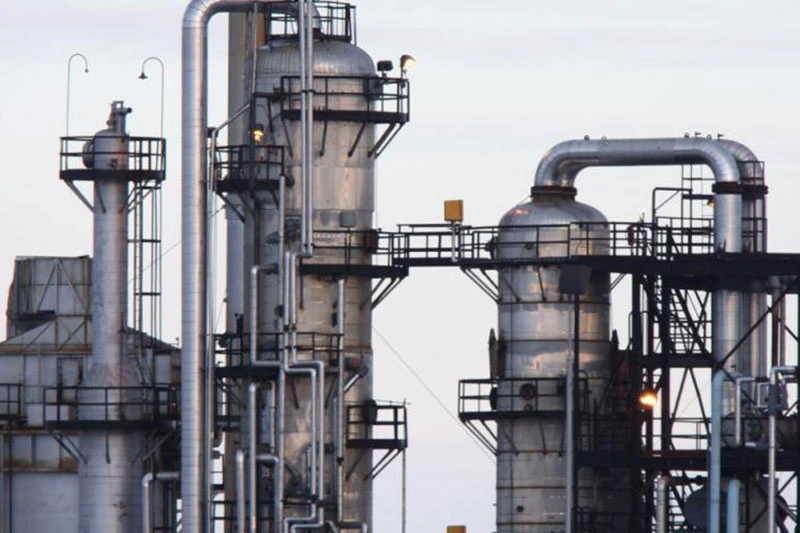
Fundamentals of Mass Transfer (Dasar-dasar Perpindahan Massa)
Kursus ini membahas dasar-dasar konveksi dan perpindahan massa meliputi difusi, distilasi biner, multikomponen, absorpsi dan stripping, ekstraksi, pengeringan, adsorpsi, dan pemisahan membran.
References:
- Seader, J. D., Henley, E. J. & Roper, D. K. (2016). Separation Process Principles: with Applications Using Process Simulators (4th ed.). John Wiley & Sons, Inc.
- Geankoplis, C. J., Hersel, A. A., & Lepek, D. H. (2018). Transport Processes and Separation Process Principles (5th ed.). Prentice Hall.
- McCabe, W. L., Harriott, P., & Smith, J. C. (2004). Unit Operations of Chemical Engineering (7th ed.). McGraw-Hill.
Course Fee
Reviews
Schedule
Appointment with tutor(s)
Registration
Mass Transfer and Diffusion
This introductory session will discuss materials about:
- Steady-State Molecular Diffusion
- Diffusion Coefficient
- Steady-State and Unsteady-State Mass Transfer Through Stationary Media
- Mass Transfer in Laminar and Turbulent Flow
- Models for Mass Transfer in Fluids with a Fluid-Fluid Interface
- Two-Film theory and Overall Mass Transfer Coefficient
Single Equilibrium Stages and Flash Calculations
Flash calculations is the fundamentals to understand component separation by boiling point difference. The materials will talk about:
- Gibbs' Phase Rule and Degree of Freedom
- Binary Vapor-Liquid Systems at Equilibrium
- Equilibrium Two-Phase Flash Calculations
- Ternary Liquid-Liquid Systems at Equilibrium
Multistage Cascades
This session discuss materials in multistage separation, including:
- Cascade Configurations
- Liquid-Liquid Extraction Cascades
- Distillation Cascades
- Membrane Cascades
- Hybrid Systems
- Degree of Freedom and Specifications for Cascades
Batch Distillation
Batch distillation is the simplest form of distillation. This session covers materials in:
- Differential Distillation
- Binary Batch Rectification
- Batch Stripping and Complex Batch Distillation
- Stage-by-Stage Methods for Batch Rectification
Binary Mixtures Distillation: McCabe-Thiele Method
McCabe-Thiele method is used to determine the operating condition of a binary distillation. This session discuss materials:
- Equipment for Vapor-Liquid Separations and General Design Considerations
- Rectifying and Stripping-Section Operating Line
- Feed-stage Considerations (q-Line)
- Number of Equilibrium Stages and Feed-stage Location
- Limiting Conditions
- Extensions of the McCabe-Thiele Method (Column Operating Pressure, Condenser, Reboiler, Feed Preheat, and Optimal Reflux Ratio)
- Estimation of Tray Efficiency for Distillation
- Packed Distillation Columns
Multicomponent Distillation: Fenske-Underwood-Gilliland Method
FUG Method, or commonly known as shortcut distillation, is a way to obtain the distillation tower initial sizing. This session discuss:
- Key Components Selection
- Operating Pressure
- Fenske Method: Minimum Equilibrium Stages
- Underwood Method: Minimum Reflux
- Gilliland Method: Actual Reflux Ratio and Equilibrium Stages
- Feed-Stage Location
Absorption and Stripping
This sessions covers materials in separation by solubility, which includes materials in:
- Graphical Method for Trayed Towers
- Kremser Group Method for Multicomponent Absorption and Stripping
- Stages Efficiency
- Rate-Based Method for Packed Columns
- Reactive Absorption Process
Liquid-Liquid Extraction
This session covers materials in:
- Equipment for Solvent Extraction
- General Design Considerations
- Hunter-Nash Graphical Equilibrium-Stage Method
Humidification Operations
This session discuss humidification which covers materials in:
- Humidity and Humidity Chart (Psychrometric Chart)
- Adiabatic Saturation Temperature
- Wet-Bulb Temperature
- Theory and Calculation for Cooling Towers
Drying of Solids
This session discuss drying, which covers:
- Equilibrium Moisture Content of Materials
- Rate of Drying
- Calculation Method for a Constant-Rate Drying Period
- Calculation Method for the Falling-Rate Drying Period
- Combined Convection, Radiation, and Conduction Heat Transfer in the Constant-Rate Period
- Equipment for Drying
- Equations for Various Types of Dryers
Adsorption Operations
Adsorption is a separation method which uses solids as adsorption medium. This session will discuss:
- Adsorbents
- Pure-Gas Adsorption
- Gas Mixtures and Extended Isotherm
- Liquid Adsorption
- Kinetic and Transport Rate
- Adsorption Equipment
Membrane Separations
Membrane separation becoming popular nowadays, as it is one of the most efficient separation method. The materials covered including:
- Membrane Materials
- Membrane Modules
- Mass Tranfer in Membranes
- Reverse Osmosis


